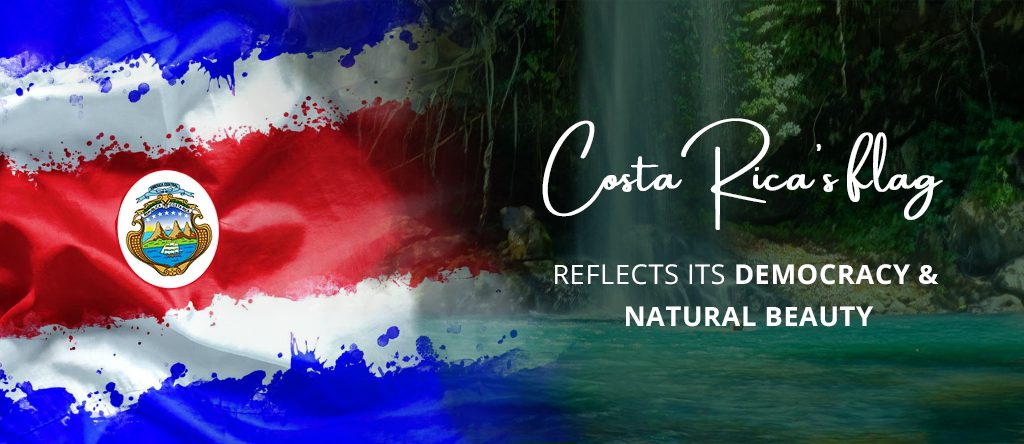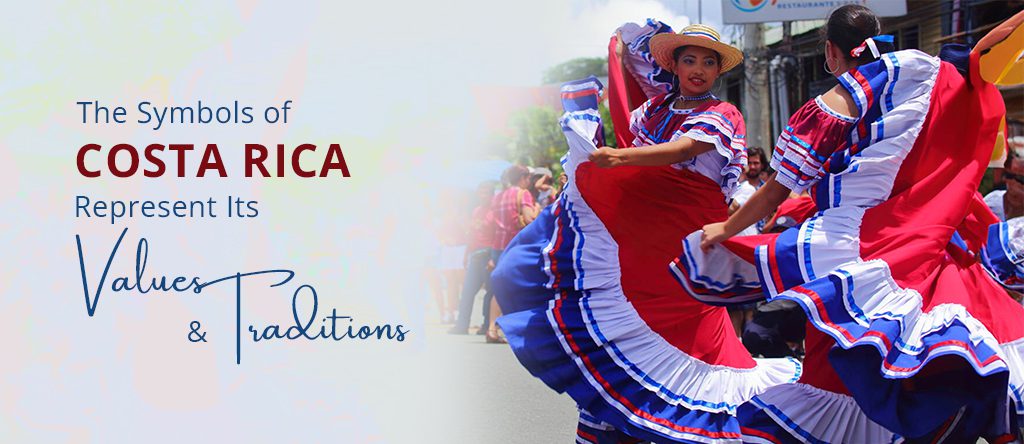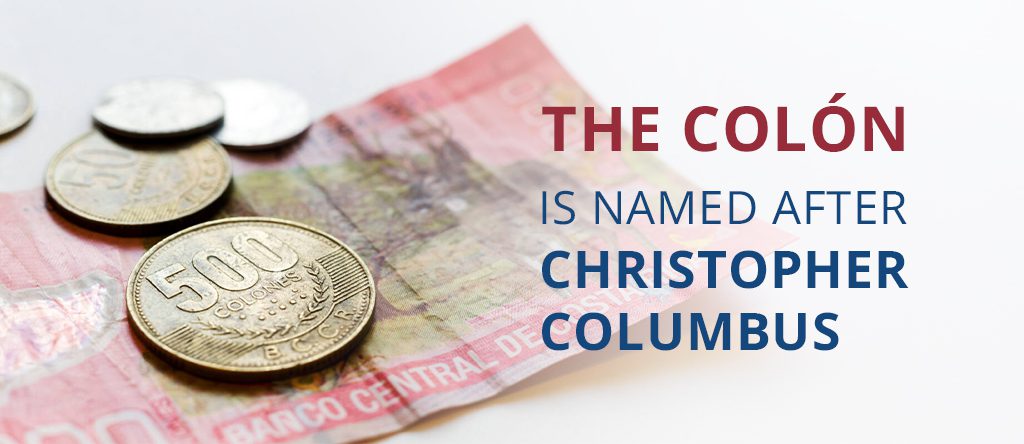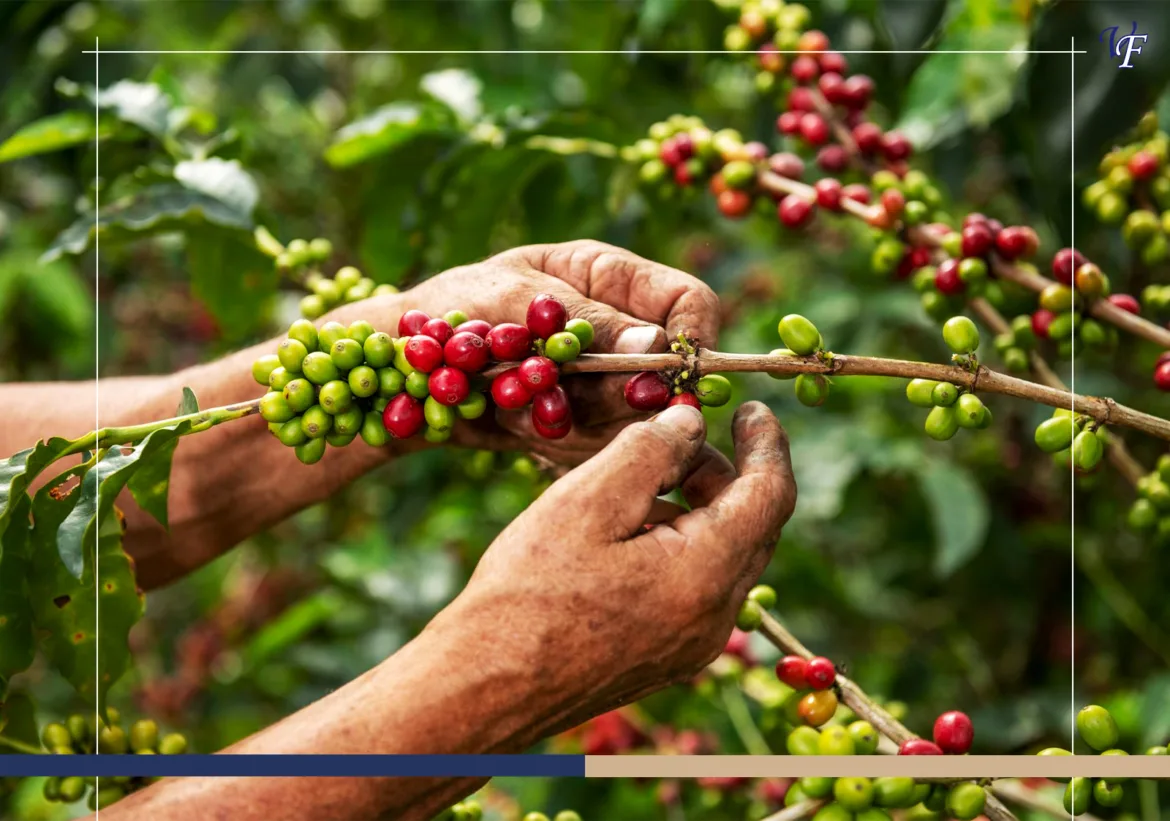A country’s identity and heritage are built on national symbols and currency. In Costa Rica, these elements showcase the richness of its history, culture, and people’s values.
This blog post explores what makes Costa Rica’s national symbols, such as the coat of arms, national anthem, flag, etc., so unique, whether it is their importance, significance, or meaning.
The Flag of Costa Rica
History of the Flag
The design of the Costa Rican flag has changed significantly. When it was a part of the United Provinces of Central America, its flag consisted of white stripes on a blue background. The current flag in Costa Rica was adopted after gaining independence to underscore democracy and unique history.
Current Flag
The Costa Rican flag was officially introduced on November 27, 1906. It has five horizontal stripes: blue, white, red (twice as wide as the others), white, and blue. The design was influenced by the French Tricolor, a symbol of liberty, equality, and fraternity.
The Costa Rica flag meaning is represented by the colors:
- The sky and opportunities are symbolized by blue.
- Peace, wisdom, and joy are represented by white.
- The bloodshed to obtain freedom, plus the warmth of the people, is symbolized by red.

National Symbols of Costa Rica
Coat of Arms
Costa Rica’s detailed coat of arms illustrates its geographical location, featuring two oceans flanking it, a broad valley, and three volcanoes.
Ships symbolize maritime history, while the seven stars at the top of the emblem represent its seven provinces.
Myrtle branches at the bottom symbolize peace, and a rising sun signifies hope.
This coat of arms has undergone several modifications, with the current version adopted in 1998 to reflect the country’s sovereignty and rich natural heritage.
National Motto
The phrase “Pura Vida,” meaning “Pure Life,” is not only a national motto but also embodies the Costa Rican spirit. It signifies the country’s relaxed attitude, love for small pleasures, and generally positive outlook. It is often heard in casual conversations and represents what it means to be a Tico.
National Anthem
The national anthem of Costa Rica, “Noble patria, tu hermosa bandera,” was written by José María Zeledón Brenes and composed by Manuel María Gutiérrez in 1852. This hymn reveres patriotism, exalting the beauty of the nation and the virtues of its inhabitants.
National Flower
The Costa Rican national flower is the Guaria Morada (Cattleya skinneri), a beautiful purple orchid. It has become famous worldwide for its attractiveness and durability, which are considered representations of the nation’s great diversity in both flora and fauna and its culture.
The orchid is associated with luck and is highly favored during local festivities. Guaria Morada reflects positivity, peace, humbleness, and PURA VIDA like other tropical flowers. It is a crucial element for local celebrations and traditions.
National Tree
The National Tree of Costa Rica is Enterolobium Cyclocarpum, also known as the Guanacaste tree. It is crucial to the ecosystem of its habitat and is held sacred by Ticos. Known for its vast umbrella-like structure and resistance to harsh climatic conditions, it symbolizes stability, protection, regional unity, and the need for coexistence with nature.
National Bird
Yigüirro is the Costa Rica national bird, popularly known as the Clay-colored Thrush. Renowned for its singing, this bird’s song is especially prominent during the wet season, making it beloved by many residents and visitors. Its song is seen as a sign of newness and harmony within the ecosystem, enhancing its popularity among people of various ages.
National Animal
The White-tailed Deer (Odocoileus Virginianus) is a unique species in Costa Rican wildlife. With its beauty and poise, this deer symbolizes the nation’s dedication to preserving its diverse species and habitats.

Other National Symbols
- National Instrument: The Marimba, a traditional xylophone-like instrument, is central to Costa Rican music and culture. It is often used in folk music and national celebrations.
- National Symbol of Labor: Historically used for transporting coffee and goods, the Oxcart symbolizes the hardworking spirit and agricultural heritage.
- National Fruit: The Cas (Psidium Friedrichsthalianum) is a small green tropical fruit used to make refreshing beverages and is cherished for its unique tart flavor.
Currency of Costa Rica
Costa Rican Colón (CRC)
The name Costa Rica comes from the term “rich coast,” given by Christopher Columbus. The country is among the few with a name not originating from any indigenous group, making it unique in its form and etymology.
History of the Colón
The introduction of the Costa Rica colón marked a significant turning point in its monetary history. Initially fixed to the American dollar, the colón has had to adapt to changing economic conditions. The design has undergone adjustments, including additional security measures to deter counterfeiters and showcase their history.
Coins and Banknotes
Costa Rica’s currency includes various categories of both paper and metal money, characterized by intricate designs featuring notable figures and national symbols of Costa Rica.
The Costa Rica currency rate is crucial for economic stability. Current denominations range from five centimos up to fifty thousand colónes. Security features include blue background colors, refracted lines, secret writings, and printed security threads.
Economic Significance
The Costa Rica money, the colón, is crucial to the economy, facilitating trade, tourism, and everyday transactions. Its stability and value are important for economic growth and development, impacting all aspects of economic life, from local markets to international trade.
Conversion of Costa Rica Colónes to the US dollars is a common requirement for tourists, with 1 dollar in Colónes Costa Rica fluctuating based on the Costa Rica currency to USD rate.

Conclusion
The Costa Rica national symbols and currency are deeply embedded in the nation’s identity and culture. From the iconic flag and emblematic coat of arms to the melodious national anthem and vibrant currency, all narrate the rich heritage and active spirit of its history.
These Costa Rica symbols reveal much about this wonderful nation; one can appreciate the profound significance they hold in shaping the nation’s identity and promoting its unique cultural heritage to the world.











